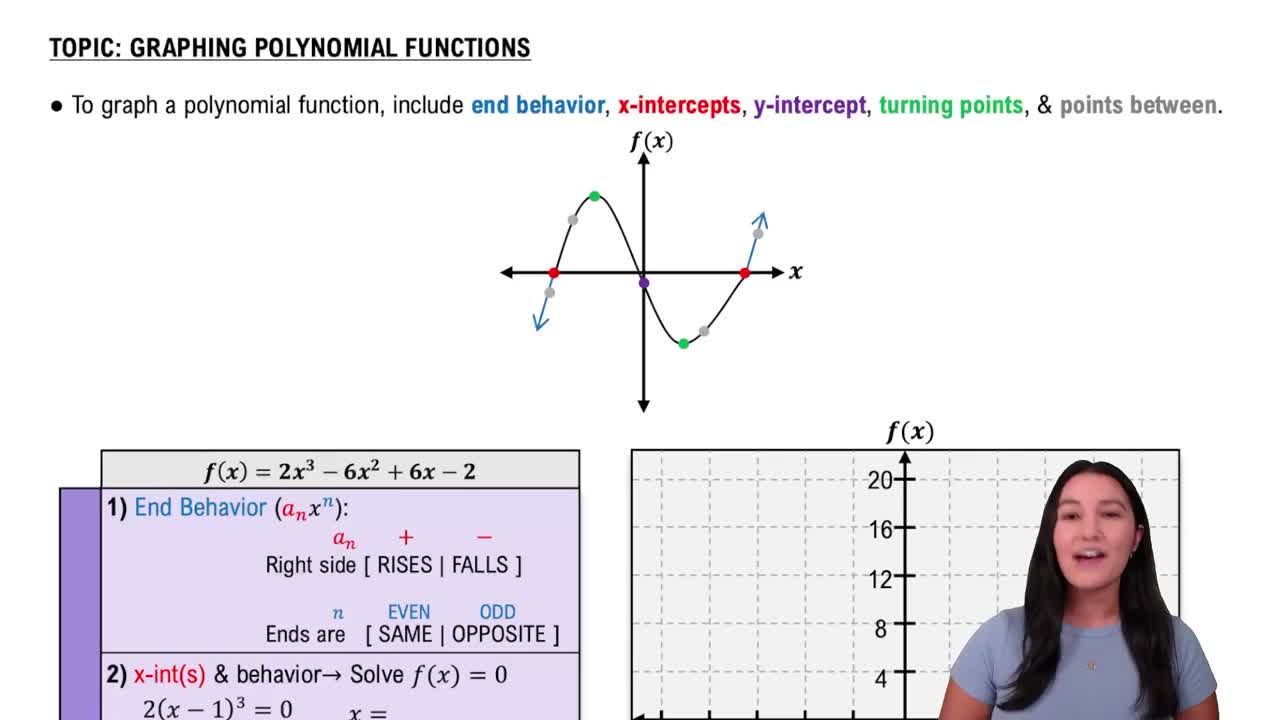Here are the essential concepts you must grasp in order to answer the question correctly.
Polynomial Functions
A polynomial function is a mathematical expression involving a sum of powers in one or more variables multiplied by coefficients. The general form of a polynomial in one variable is f(x) = a_n*x^n + a_(n-1)*x^(n-1) + ... + a_1*x + a_0, where 'a' represents coefficients and 'n' is a non-negative integer indicating the degree of the polynomial. Understanding the structure of polynomial functions is essential for graphing and analyzing their behavior.
Recommended video:
Introduction to Polynomial Functions
Factoring Polynomials
Factoring a polynomial involves expressing it as a product of simpler polynomials or linear factors. This process is crucial for simplifying the polynomial and finding its roots, which are the x-values where the function equals zero. Techniques for factoring include grouping, using the quadratic formula, and applying special product formulas like the difference of squares. Factoring makes it easier to graph the polynomial by identifying key points.
Recommended video:
Introduction to Factoring Polynomials
Graphing Polynomial Functions
Graphing polynomial functions requires understanding their key features, such as intercepts, end behavior, and turning points. The x-intercepts correspond to the roots of the polynomial, while the y-intercept is found by evaluating the function at x=0. The degree of the polynomial influences the number of turning points and the direction in which the graph extends as x approaches positive or negative infinity. A well-constructed graph provides a visual representation of the polynomial's behavior.
Recommended video:
Graphing Polynomial Functions
 Verified step by step guidance
Verified step by step guidance Verified video answer for a similar problem:
Verified video answer for a similar problem:



 6:04m
6:04m